Germania Inferior (11)
Q152136Germania inferior: small province of the Roman empire, situated along the Lower Rhine. Its capital was Cologne.
The fourth century
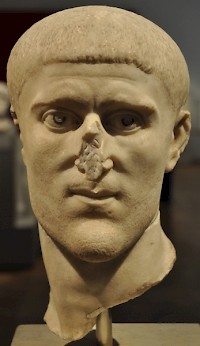
Frankish pillagers, Saxonian pirates, Roman taxmen... there was only ray of light after the catastrophe of 274 - the barbarians were unorganized. They roamed through Gaul and destroyed villages, but were unable to settle on the west bank of the Rhine. The Roman government did nothing to restore order, however. Three years of anarchy passed until the emperor Probus deigned to intervene.
When the Alamanni and Franks learned about his arrival, they tried to return to their homeland, but they carried much booty and were slow. When they reached the Rhine, Probus was ready to strike and defeated the invaders. The captive barbarians were treated well: they were permitted to stay as peasants in the deserted areas along the Rhine, under the condition that they would be loyal citizens of the Roman empire and fight against new invaders. This policy was successful, and for almost three generations, the frontier along the middle Rhine was safe.
However, Probus did not restore the entire frontier of Germania Inferior: for some time, the road between Boulogne, Bavay, Tongeren, and Cologne was to be the most northern part of the empire. The sandy area of Brabant was occupied by Germanic peasants from Westphalia.
In 293, the Dutch river area was reconquered by caesar (crown prince) Constantius I Chlorus, a Roman general who was briefly to be emperor in 305-306. He defeated the Franks somewhere in the Betuwe and rebuilt the forts along the Lower Rhine. It is likely that in these years a new unit of Batavians, which is mentioned in several fourth-century texts, was founded. (However, it is interesting to note that there was now only one unit from this area, which had once been able to man nine units of infantry and one squadron of elite cavalry).
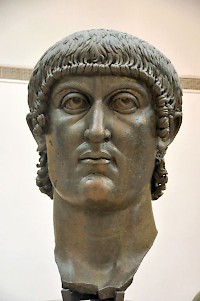
Constantius is probably also responsible for new administrative units. Tongeren, which had been part of Gallia Belgica, was now added to Germania Secunda, the new name of Germania Inferior. The residence of the Roman government among the Menapians was transferred from Cassel to Tournai. The taxes were reorganized as well - probably. There is no direct evidence for our region, but it would fit the normal pattern of this age.
Constantius was succeeded as emperor by his son, the famous Constantine I the Great (306-337). He brought the strategy of "defense in depth" to perfection. This implied a line of fortifications along the Rhine, guardposts on strategic positions, and the existence of a cavalry army in the hinterland. During Constantine's reign, many forts along the Rhine were heavily fortified (e.g., Deutz, Nijmegen, Valkenburg, and castles along the coast), and several bridges were constructed to facilitate quick cavalry maneuvers (Maastricht and Cuijk).
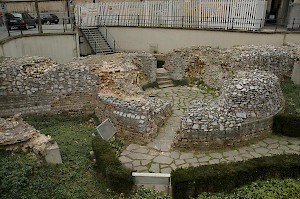
At first sight, the new settlements look smaller than those of the second century. For example, the new walls of Xanten protected nine blocks instead of the old thirty-nine. The same happened to Tongeren, where a new wall was built in the neighborhood of the old forum. This does not mean, however, that the towns were really smaller. The new defense works were made of expensive natural stone, and it is likely that the architects constructed compact castles with many people living outside the walls.
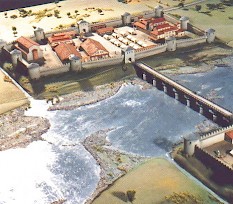
Tens of thousands of soldiers must have lived in the new castles. But there were less people living in the hinterland and grain had to be imported from Britain. At the mouth of the Rhine, a large port was built. The remains of the mighty walls of a fortified granary were visible in the sixteenth and seventeenth century near Katwijk, but modern archaeologists have been unable to trace the ruins of the 'Brittenburg', which have become one of the most famous and romantic mysteries of Dutch archaeology. The violence of the sea has probably destroyed the remains of the castle beyond recovery.
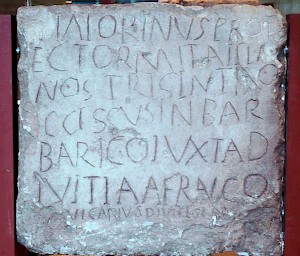
In spite of the expensive castles and treaties with Frankish warlords, Germania Secunda was not completely tranquil. An inscription from Cologne mentions a soldier named Viatorinus, who was killed by the Franks near Deutz.
And yet, the system was functioning. The monetary economy, which had suffered in the third century, was revitalized, and trade relived as well. To the best of our knowledge, the fourth century saw only one severe disruption of the peace: in 355, the Germanic tribes invaded Gaul again. The future emperor Julian repelled the Alamanni and defeated the Franks. The latter were allowed to remain as peasants in what is now called Brabant. This incident is not without significance for the social geography of modern Belgium, as we will see in the next part of this article.